Antique Loo Tables were a 19th Century Victorian design of table originally built for the 17th century trick taking card game loo also known as Lanterloo. This design then became known as the breakfast table as it was used more for smaller dining on rather than games playing. Antique Loo Tables usually have an oval moulded top, very often inlaid in a beautifully figured ‘mirrored’ walnut veneer and finished with intricate inlay detailing. The top will tilt in an upright position with a tilting brass mechanism fitted to a pedestal base, enabling it to be easily stored into a corner of a room when not in use. These fine antique tables will stand on elegant turnings with a central finial, have four splayed legs that are usually carved and sit on porcelain castors. The antique pedestal card table was design of choice for games playing, as they were smaller in size and were more useful as a side table when not in use, so the design of the Loo table didn’t last very long. In today’s home these types of tables can make the ideal small dining table for a flat or smaller property to seat up to four people. Have a look below at our lovely examples available for sale.
Styles of antique Loo Tables
Some previous examples we have sold include this delightful 19th century Victorian antique oval antique loo table that has been constructed using the finest figured walnut timbers. The oval moulded top is beautifully figured and mirrored and benefits from being able to be tilted upright when not in use, with the original brass mechanism. The top rests on 4 beautifully turned supports with central finial and sits on four out swept scrolled legs with white porcelain castors.
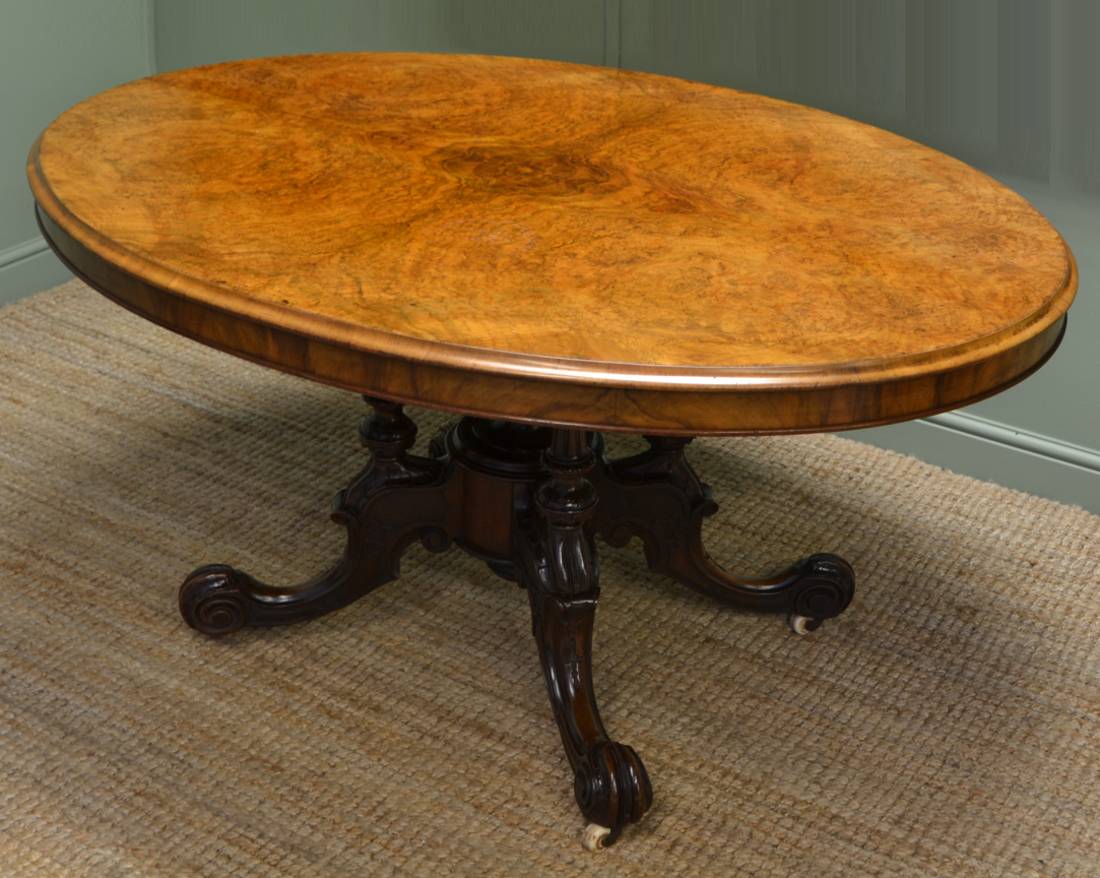
This Victorian, Burr Walnut, Oval, Inlaid Antique Loo Table is quarter veneered being not only mirrored but also beautifully inlaid.
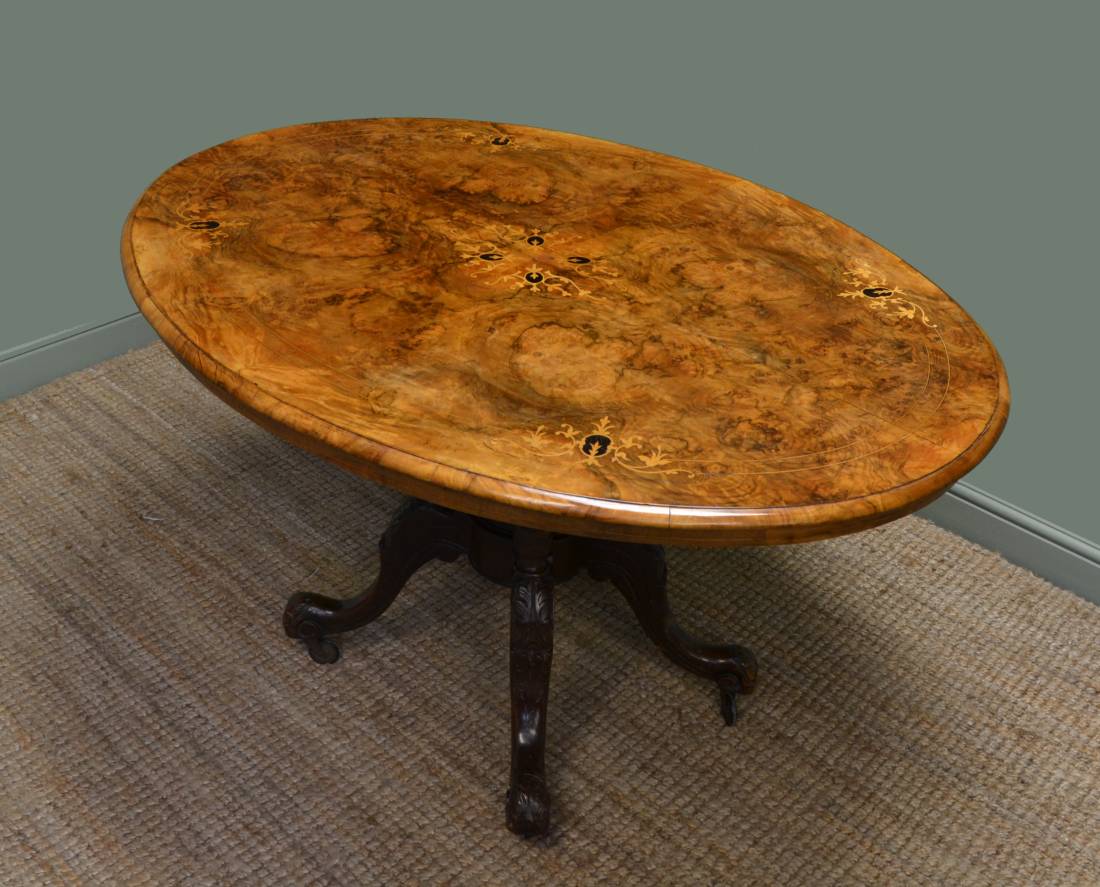

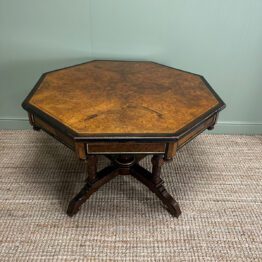
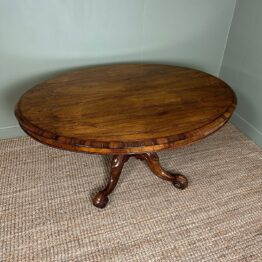
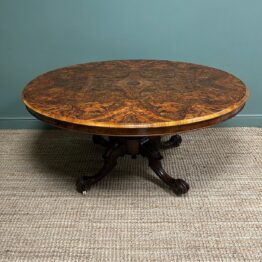
2 Comments. Leave new
Why does my table have a spiral screw in the stand that turns, if it is to raise or lower the table, how to I loch the table for security, mine just looses all stability and wobbles.
Hi
Is this maybe a birdcage mechanism, It was designed to turn 360 degrees or it could just be a screw top to secure the top in place.
Many thanks
James